Winter has come to the sidewalk garden.
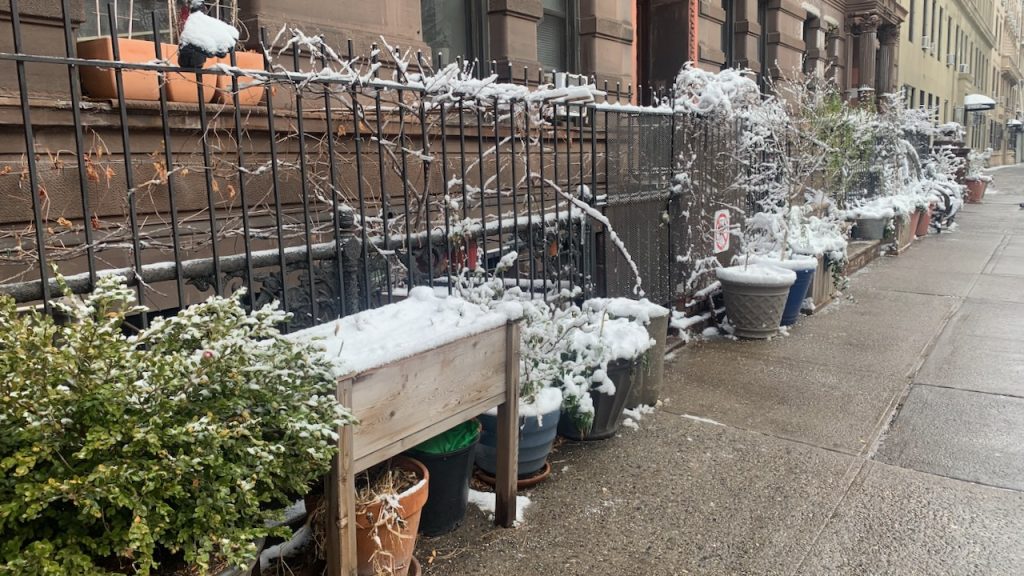
Sidewalk Greenspace on New York's Upper West Side
Winter has come to the sidewalk garden.

The growing season is drawing to an end, but this colorful geranium on the steps of 217 W 106th doesn’t seem to have gotten the memo and is putting on a show amidst the drying grass and slowly-yellowing leaves.
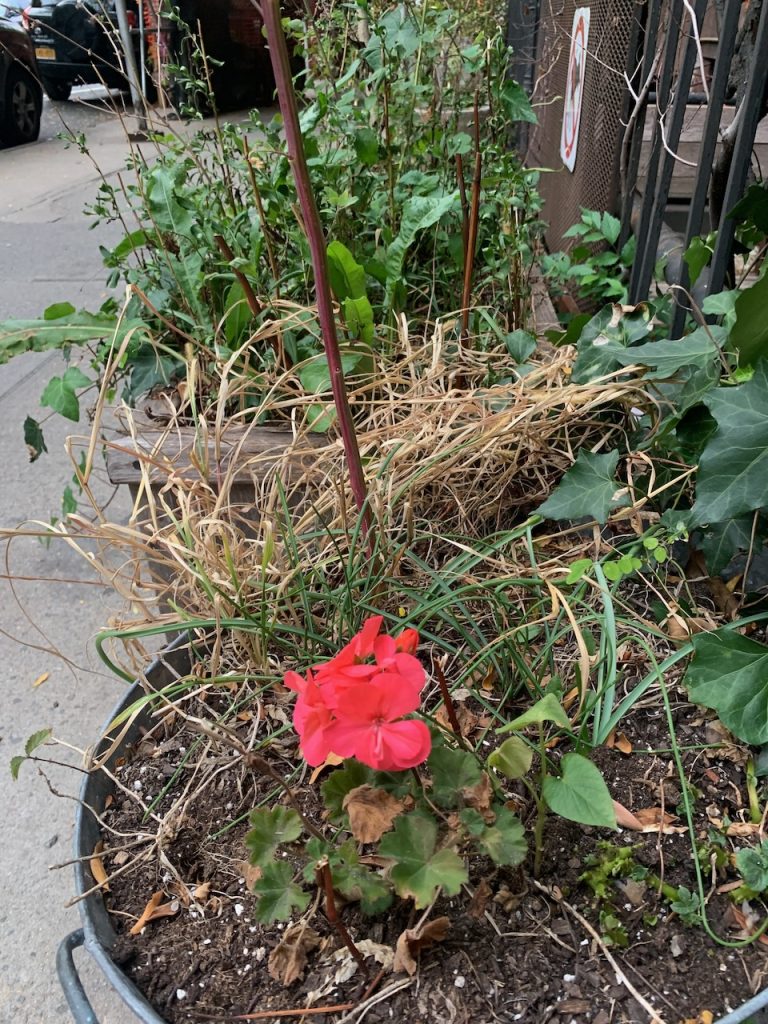
Our garden got badly parched this summer, but it’s managed to bounce back a little as temperatures have dropped from their peaks.
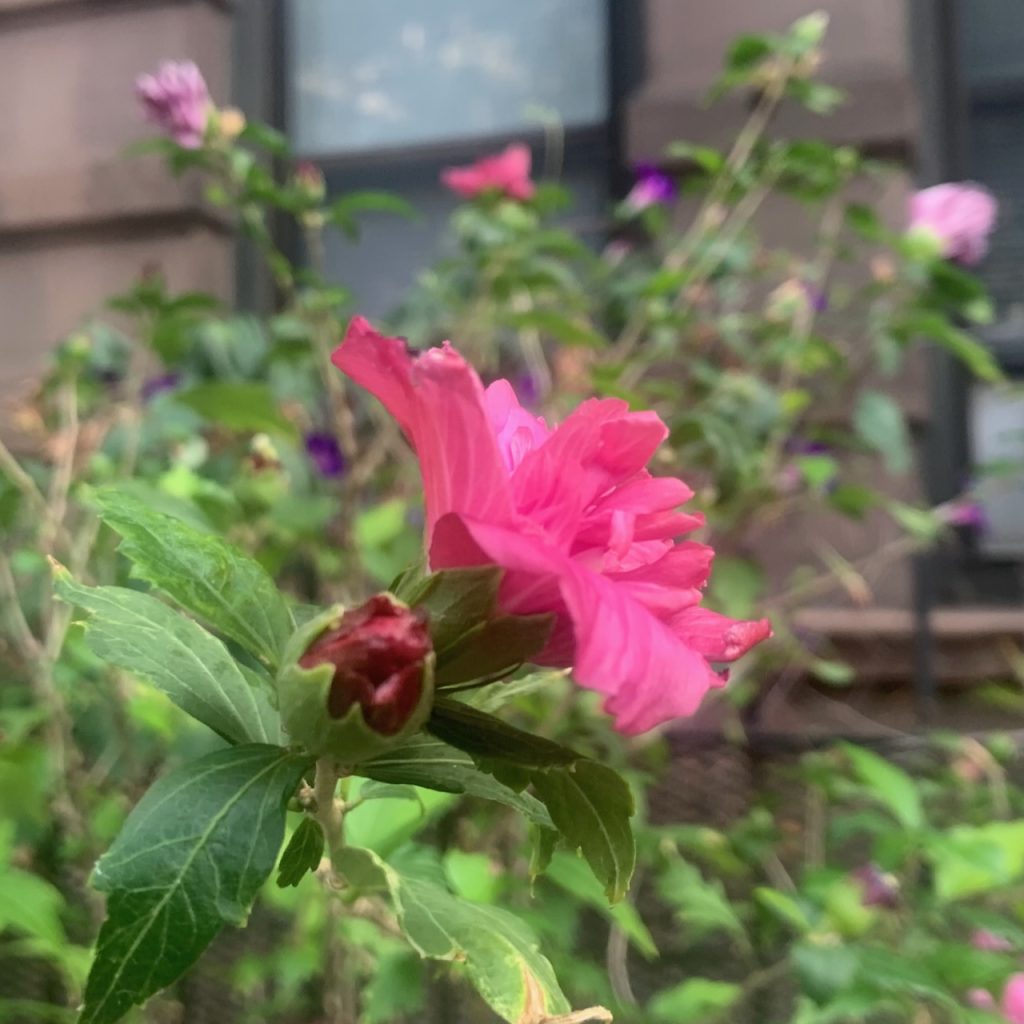
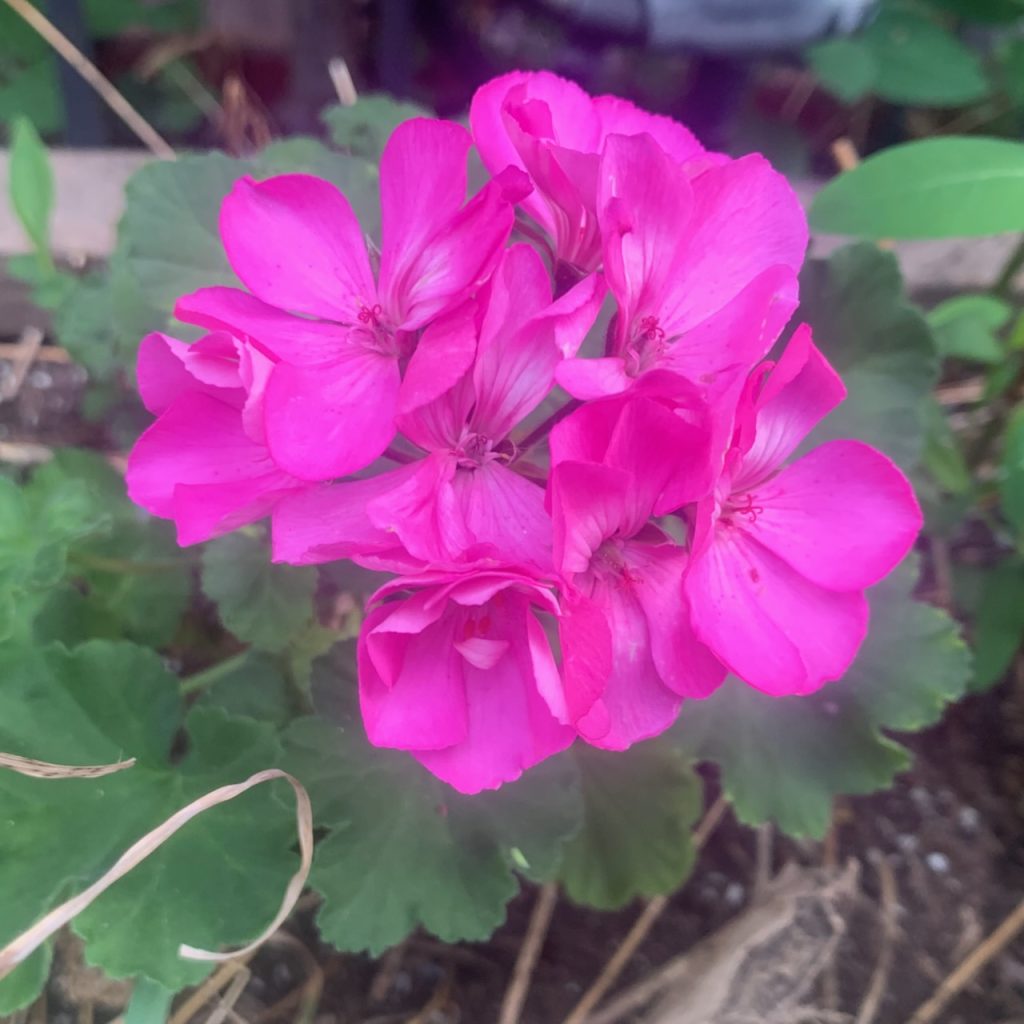
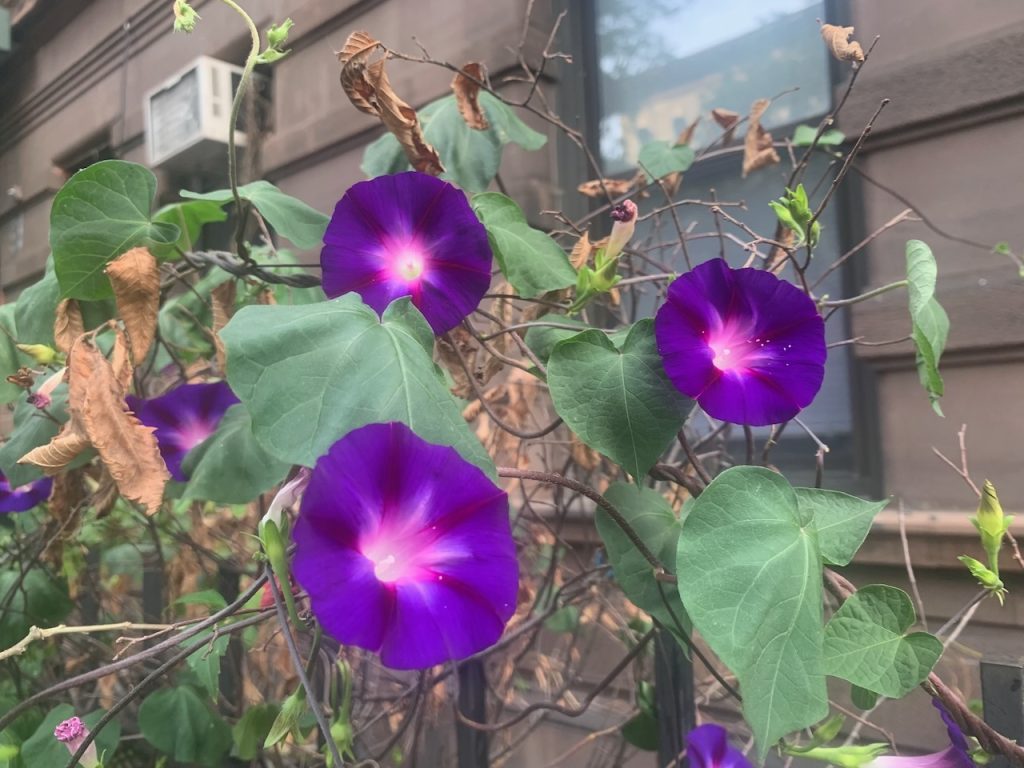
Our hibiscus shrub (aka “Rose of Sharon”) is getting ready to flower for the first time this season.
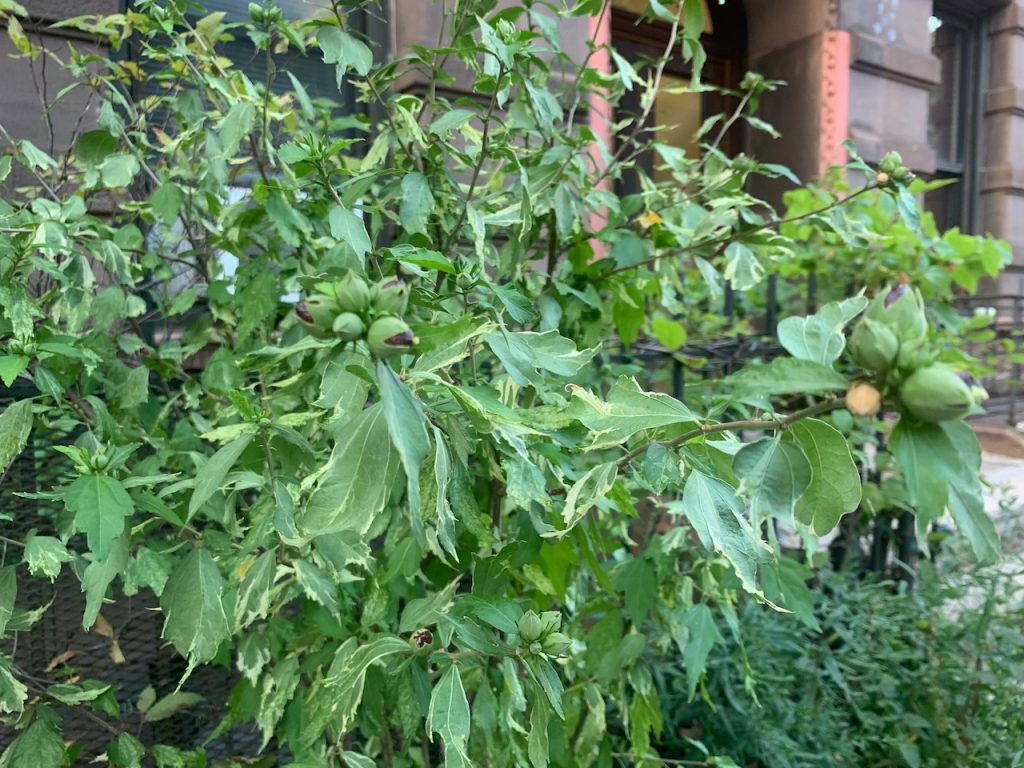
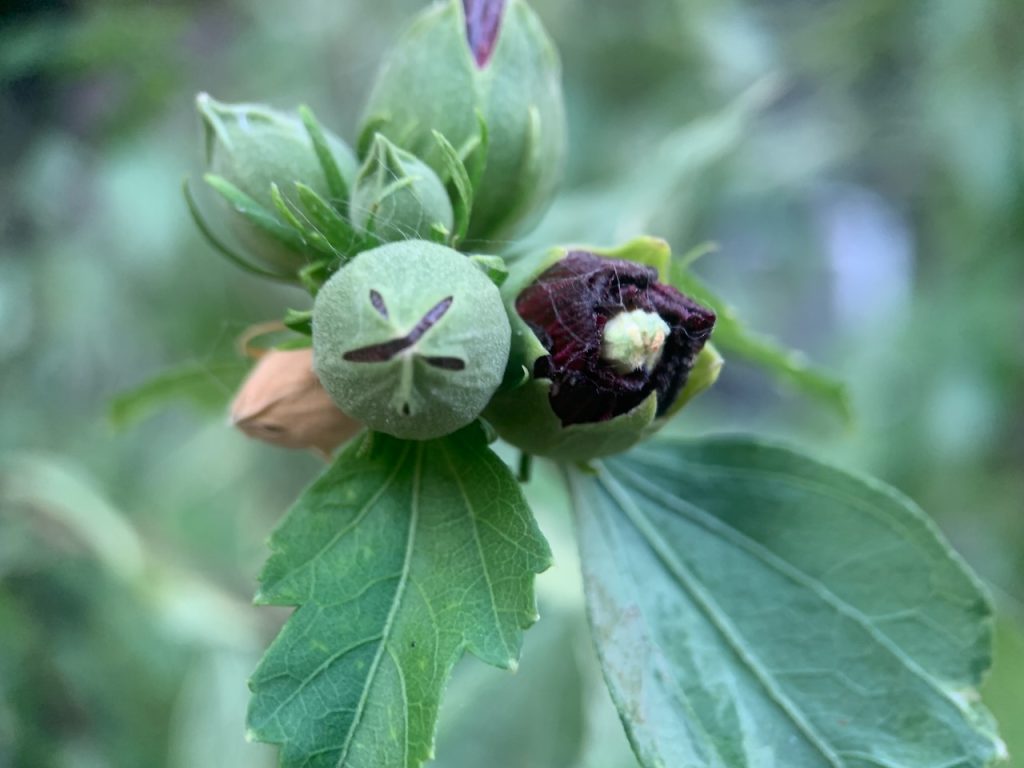
I love the thistle-like flowers on our burdock plants!

A nice fiery set of pansies has popped out following today’s rain.
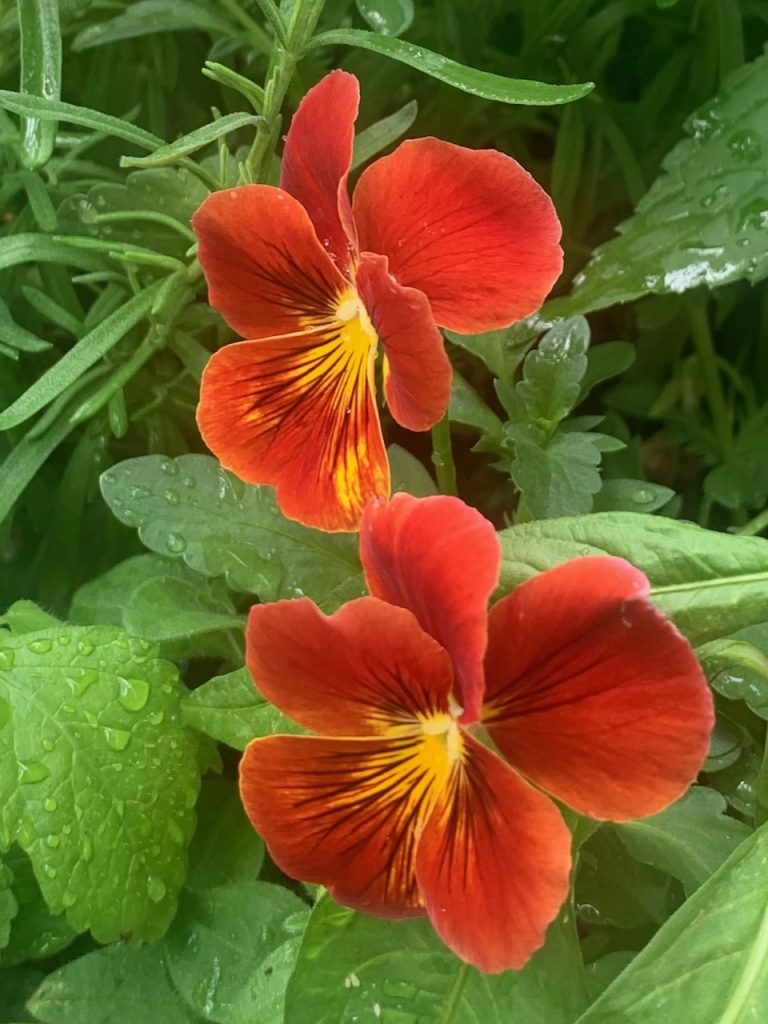
These bright-yellow oleander aphids are growing fat and plentiful on the sap of a dogbane plant. In agricultural settings, aphids are almost universally viewed as a pest, but I’m pleased to see them here in our tiny habitat, because I know they’re a favorite food for ladybugs and other insectivores whose numbers will be growing in the coming weeks.

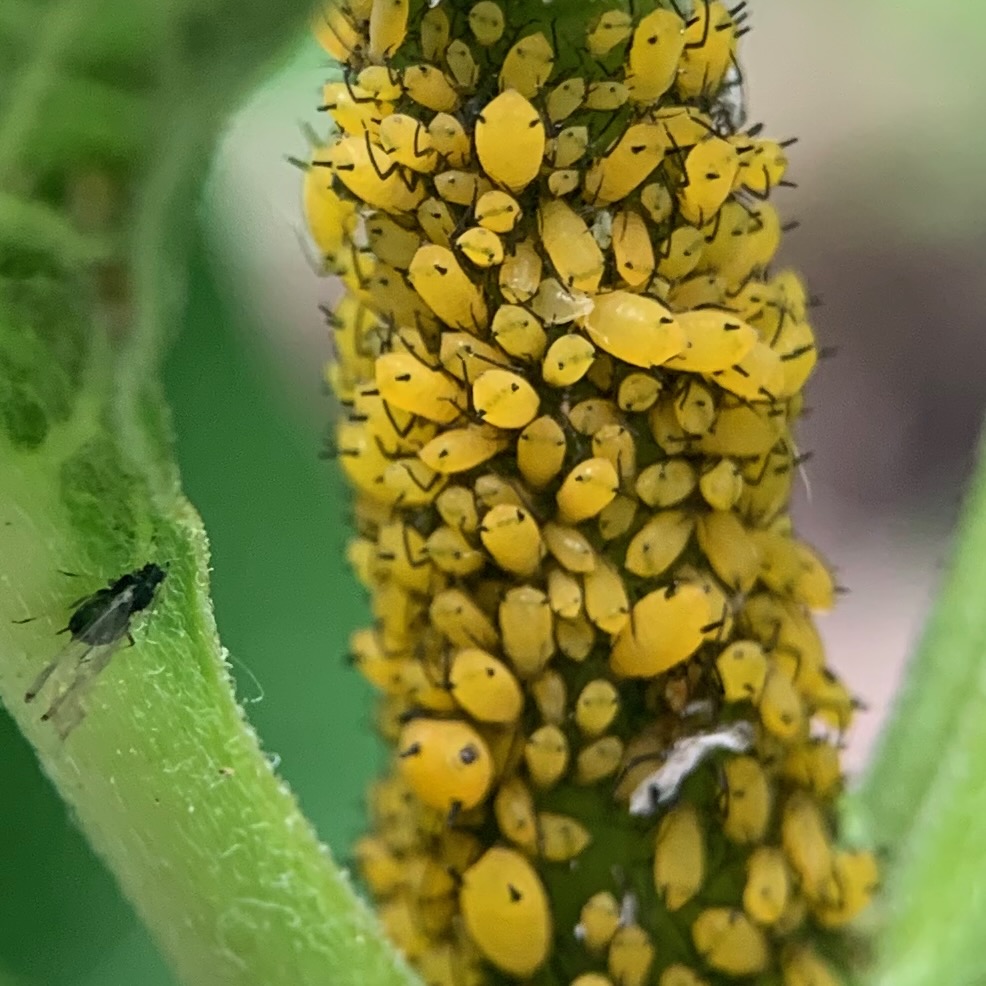
I’m really pleased with the way the grapevines and little trees soften the edges of the otherwise-drab fence and stairs in front of our buildings.
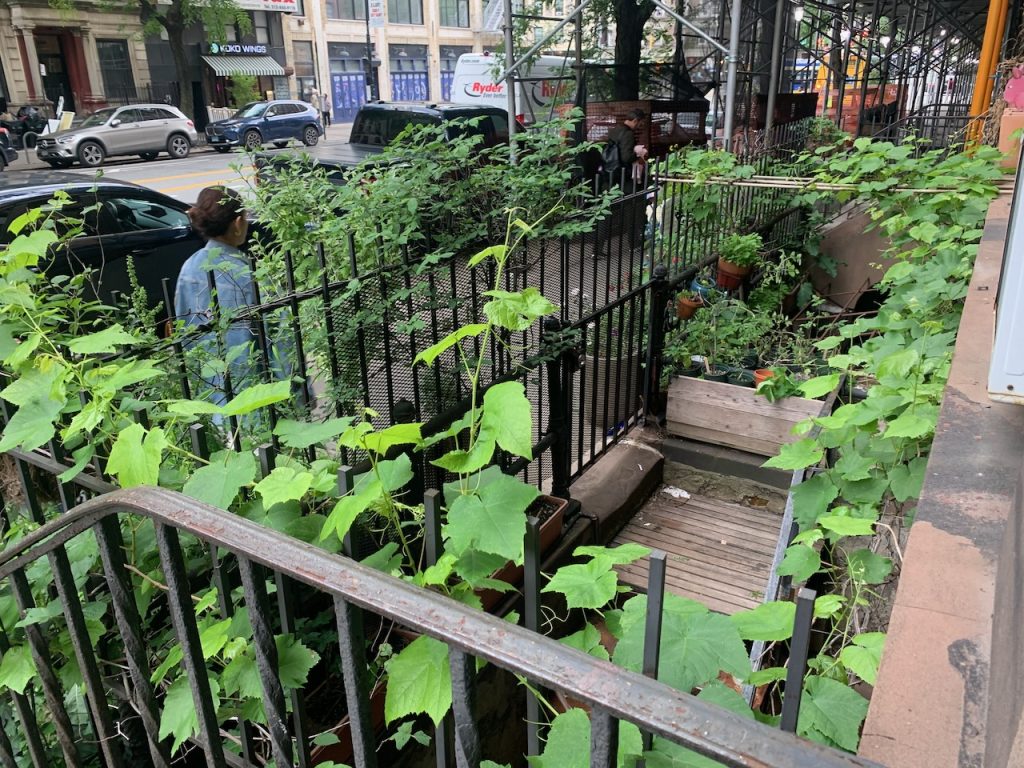
I think these might be ready to eat by tomorrow…
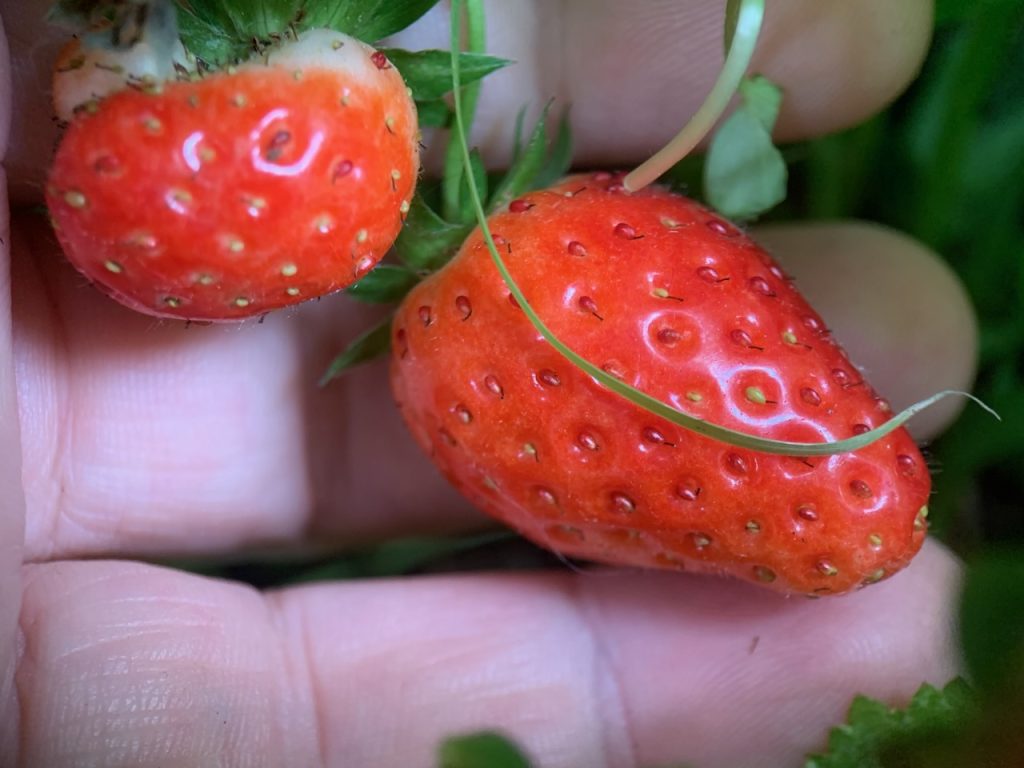
The roses are really having a productive season.
